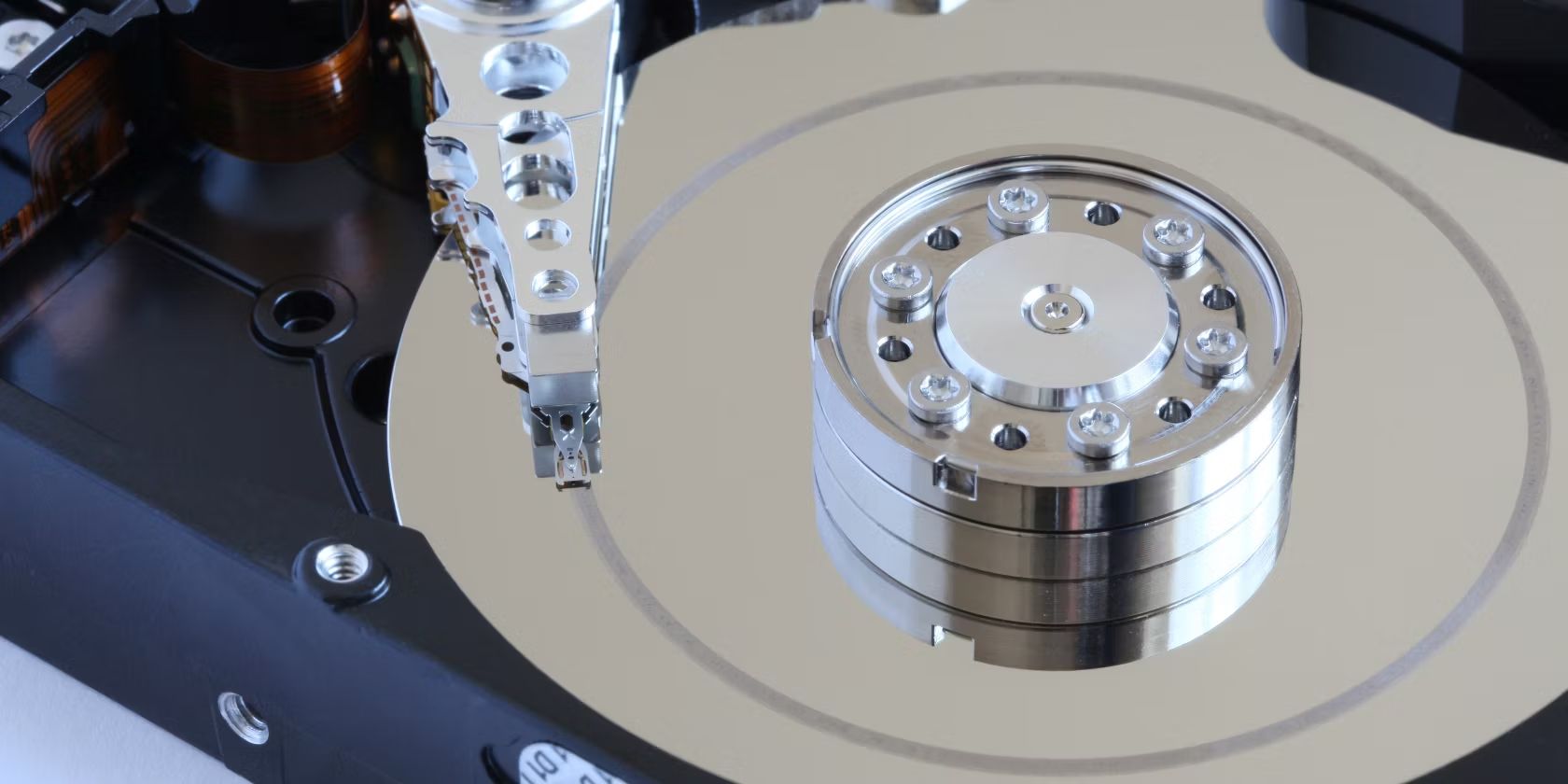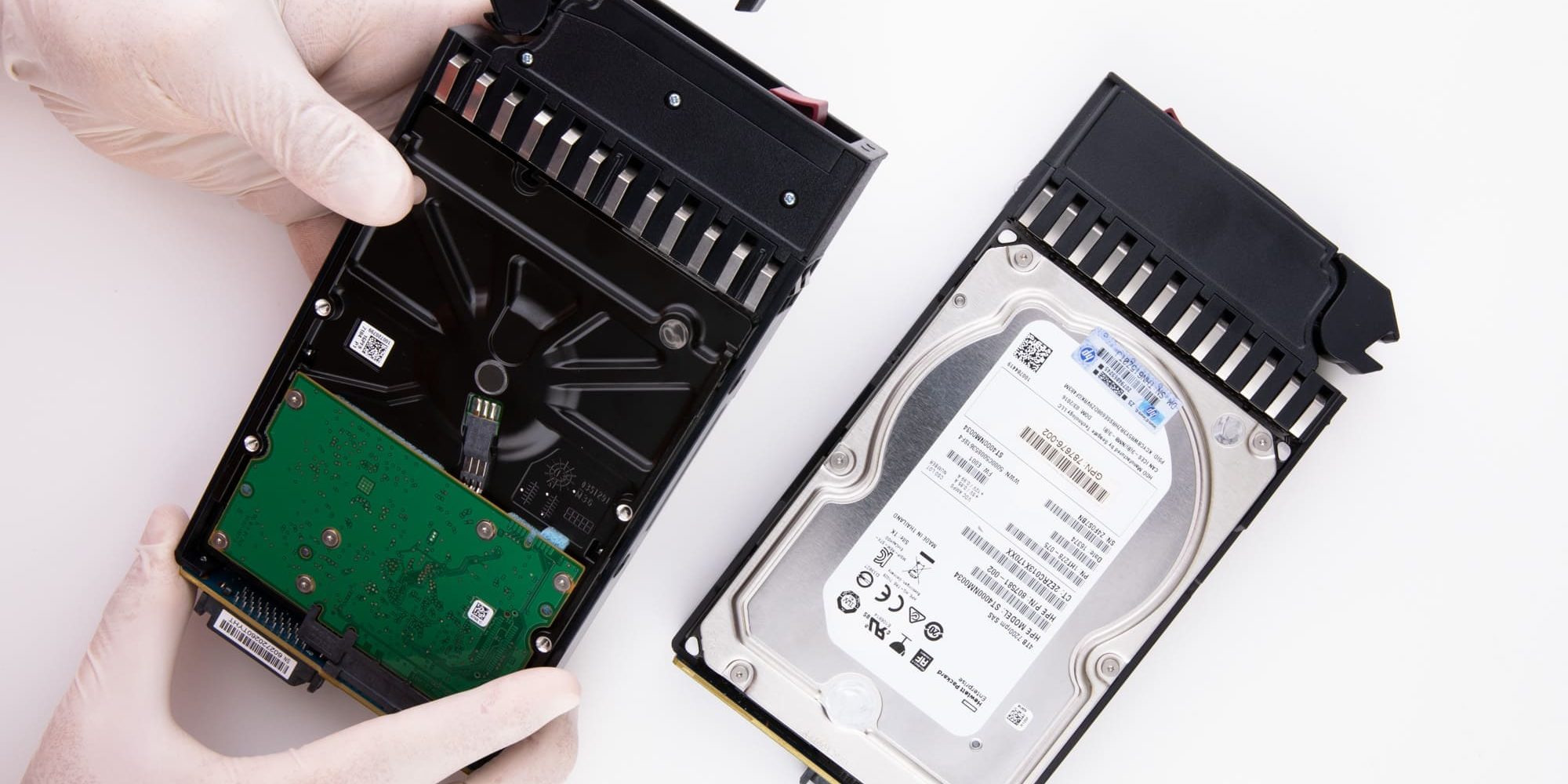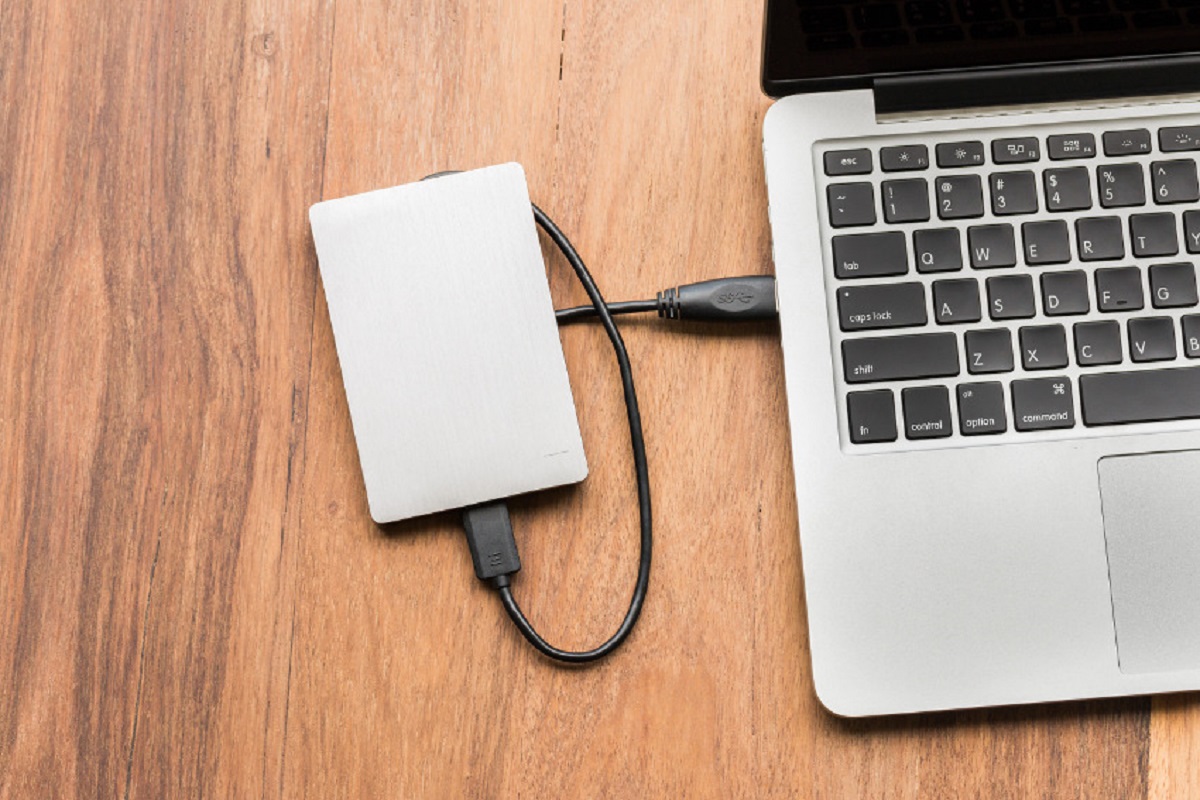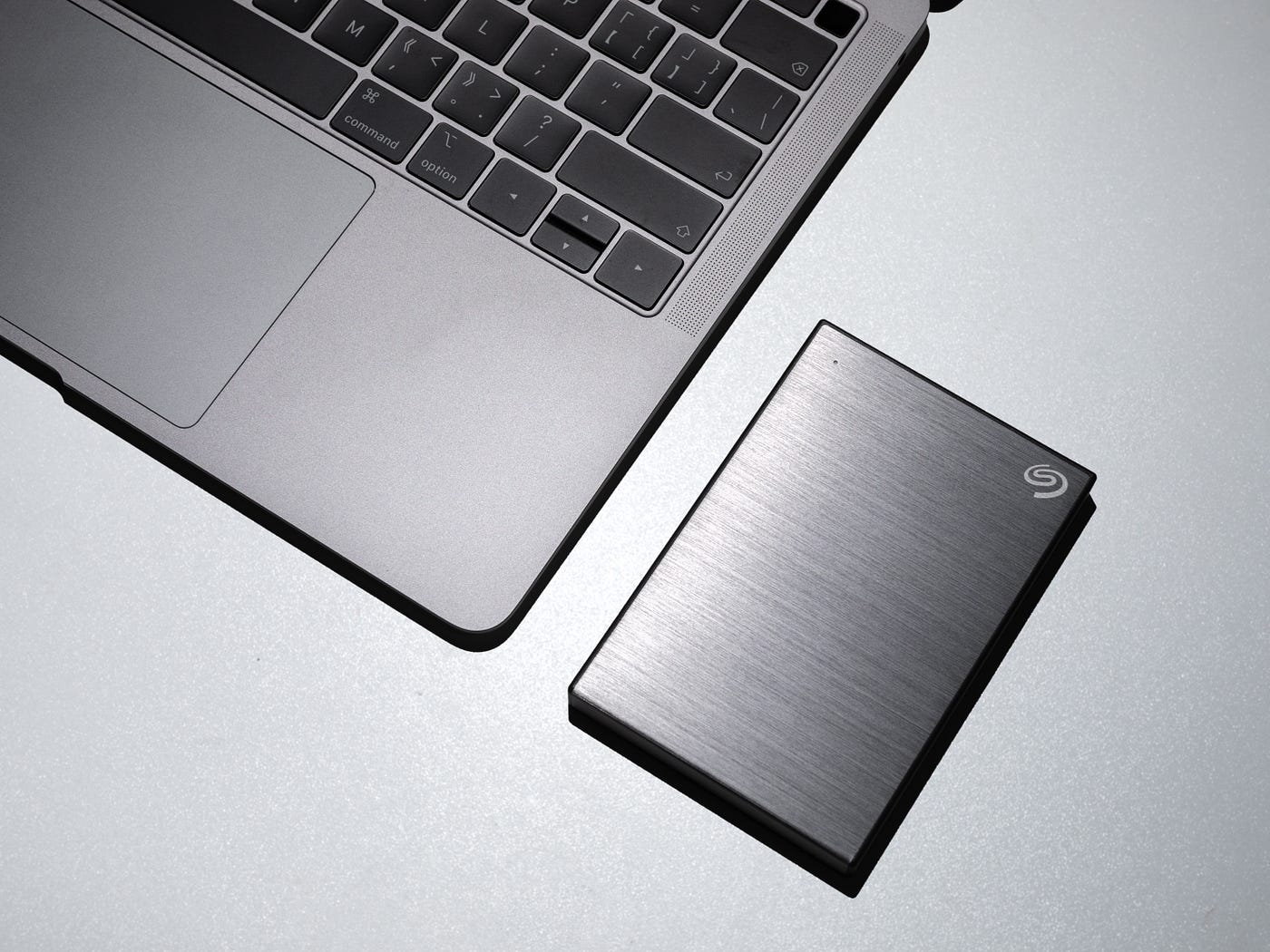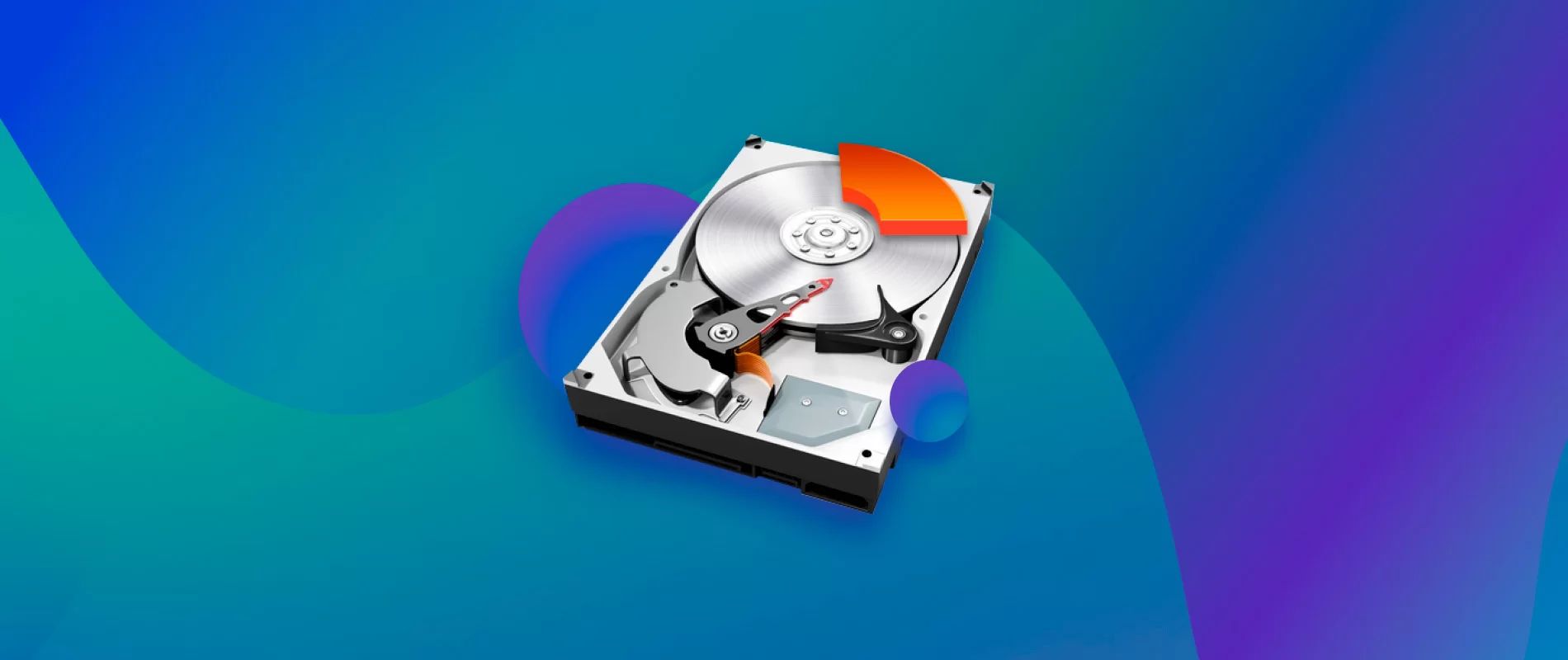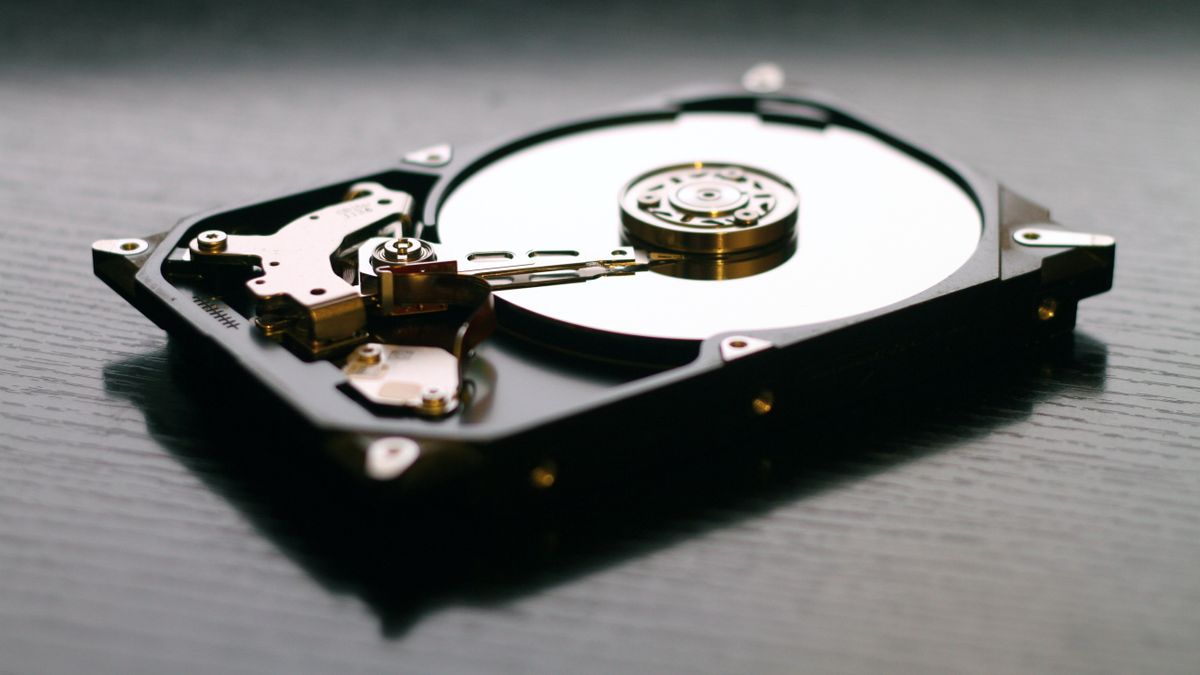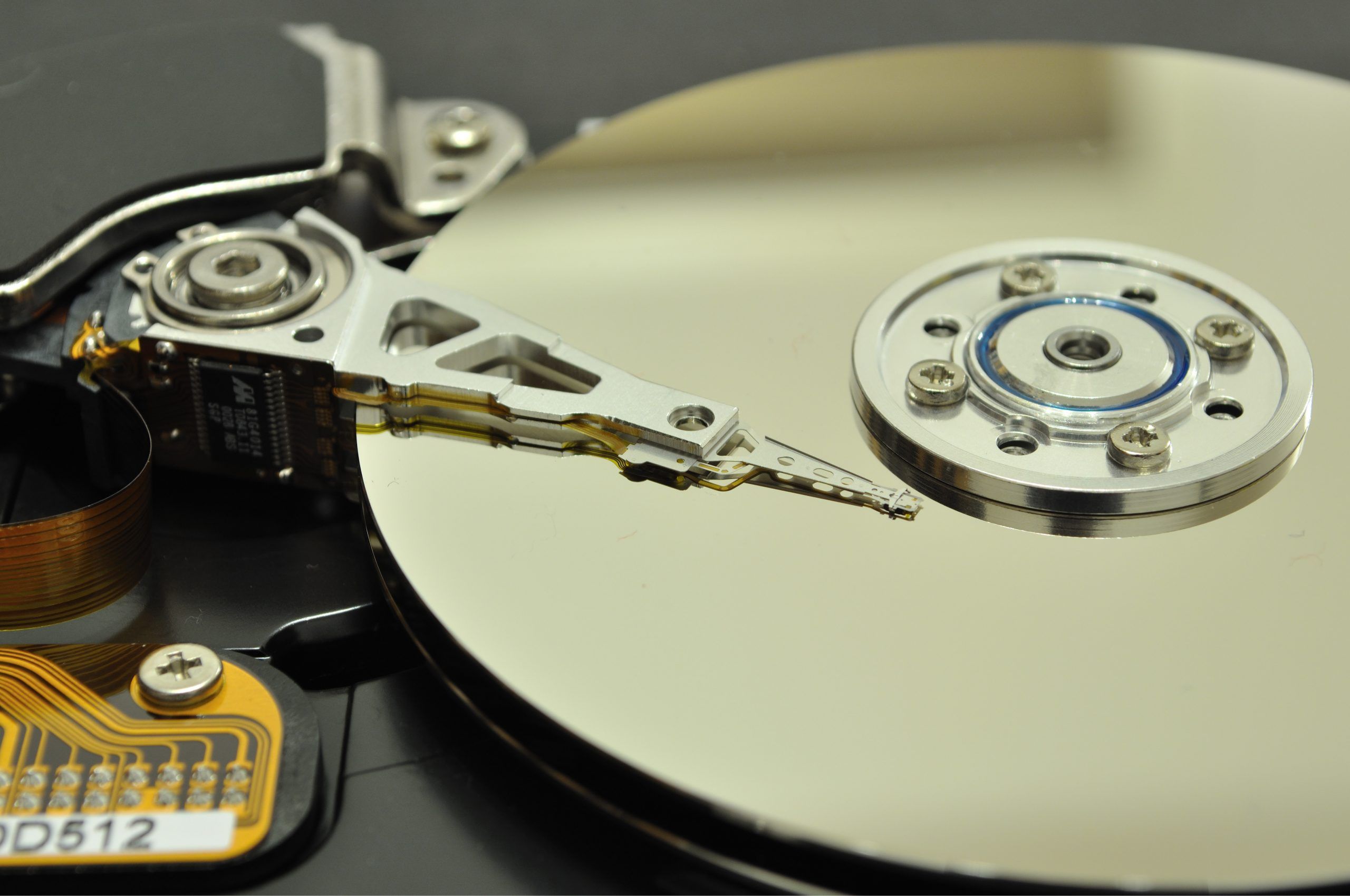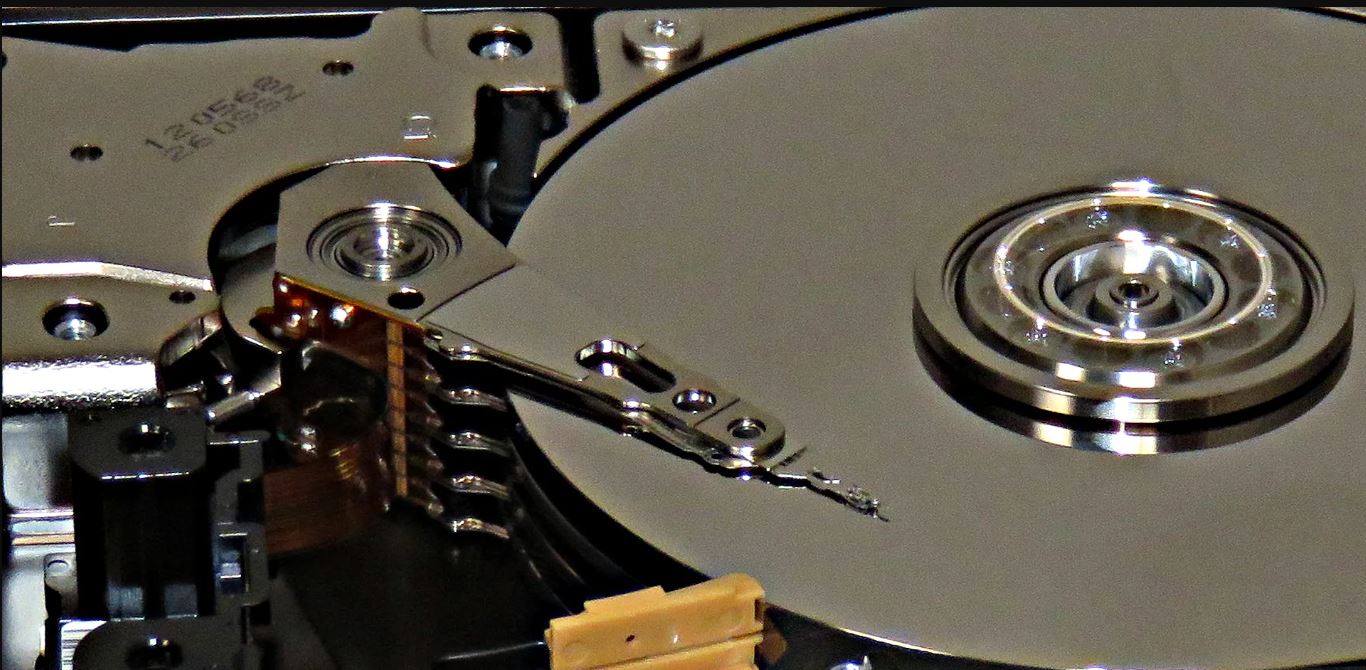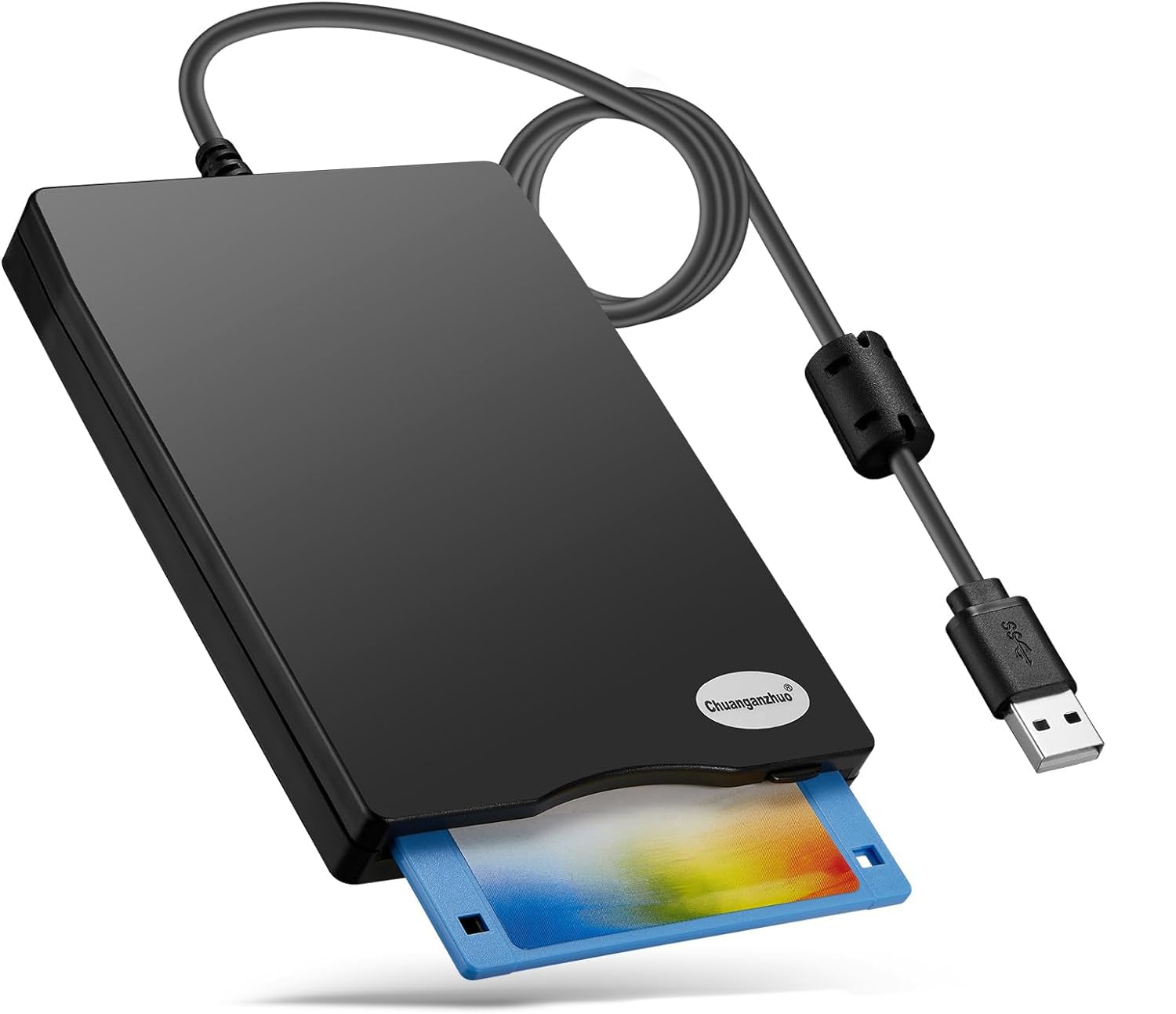Introduction
Dealing with a hard disk drive failure can be a frustrating and stressful experience. Whether you use your computer for work, personal use, or both, losing important data can have serious consequences. Understanding the signs and causes of hard disk drive failure, as well as the steps to take for fixing or preventing it, is crucial for ensuring the safety and longevity of your data.
A hard disk drive, commonly referred to as an HDD, is the primary storage device in most computers. It is where all your files, documents, photos, and software are stored. However, like any mechanical device, HDDs can fail over time due to various reasons.
In this article, we will explore the common signs of hard disk drive failure, the possible causes behind it, and the steps you can take to fix or replace the drive. We will also discuss the importance of regularly backing up your data to prevent permanent data loss. By the end, you will have a better understanding of how to address hard disk drive failures and protect your valuable information.
Signs of Hard Disk Drive Failure
Hard disk drive failures can manifest in different ways, and it is essential to recognize the early warning signs to avoid potential data loss. Here are some common signs that indicate your hard disk drive may be failing:
- Strange Noises: If you notice unusual clicking, grinding, or whirring sounds coming from your computer, it could indicate a hardware issue with your hard drive. These sounds often suggest mechanical problems such as a failing motor or damaged read/write heads.
- Slow Performance: If your computer suddenly starts to run sluggishly, with programs taking a long time to load, it could be a sign of a failing hard drive. As the drive deteriorates, it may struggle to read and write data, resulting in delays and a noticeable decrease in overall system performance.
- Frequent Freezing or Crashing: If your computer frequently freezes, crashes, or experiences the infamous “blue screen of death,” it could be due to issues with your hard disk drive. When sectors on the drive become damaged, it can lead to data errors and system instability.
- Error Messages: Pay attention to any error messages or warnings that appear on your screen. If you consistently encounter disk-related error messages, such as “Disk boot failure” or “No boot device found,” it could indicate a failing hard disk drive.
- Disappearing or Corrupted Files: If you find that files have mysteriously disappeared, or you are unable to access certain files and folders, it may be a symptom of a failing hard drive. Data corruption, often caused by bad sectors, can lead to file loss or damage.
While these signs do not guarantee a hard disk drive failure, it is essential to take them seriously and address them promptly. If you suspect that your hard drive is failing, it is crucial to back up your data immediately to avoid permanent loss.
Causes of Hard Disk Drive Failure
Hard disk drive failure can occur due to various factors, ranging from mechanical issues to software malfunctions. Understanding the causes can help you take preventive measures and minimize the risk of data loss. Here are some common causes of hard disk drive failure:
- Physical Damage: External forces, such as drops, bumps, or exposure to extreme temperatures, can physically damage the delicate components of a hard disk drive. Impact or excessive heat can cause read/write heads to crash into the platters, leading to irreparable damage.
- Manufacturing Defects: Occasionally, hard drives may have manufacturing defects that affect their performance and reliability. Defective components or faulty assembly can shorten the lifespan of the drive and increase the likelihood of failure.
- Overheating: Excessive heat is a common cause of hard disk drive failure. When the internal temperature of the drive exceeds recommended levels, it can lead to component malfunction and data corruption. Proper ventilation and cooling are essential for ensuring the longevity of your hard drive.
- Power Surges: Sudden power surges or fluctuations in electricity can cause damage to the delicate electronic components of a hard disk drive. It is crucial to use surge protectors or uninterruptible power supply (UPS) devices to shield your computer from power-related issues.
- Software Corruption: Malware infections, software glitches, or improper shutdowns can lead to file system corruption and, subsequently, hard disk drive failure. It is important to keep your operating system and antivirus software up to date to minimize the risk of software-related failures.
It is worth noting that hard disk drives are not designed to last forever, and they will eventually fail due to regular wear and tear. However, with proper care and maintenance, you can prolong their lifespan and minimize the chances of sudden failures. Regularly backing up your data and monitoring the health of your hard drive can help you catch any warning signs early and take necessary action to prevent data loss.
Backing Up Your Data
Backing up your data is crucial in safeguarding your files and documents against the potential loss resulting from a hard disk drive failure. It is an essential practice that ensures the availability of your important data even in the face of hardware or software issues. Here are some methods you can use to back up your data:
- External Hard Drive: Using an external hard drive is one of the simplest and most convenient ways to back up your data. You can connect the external drive to your computer and copy the files manually or use backup software to automate the process. Make sure to regularly update your backups to include any new or modified files.
- Cloud Storage: Storing your data in the cloud provides an off-site backup solution. Services like Google Drive, Dropbox, and Microsoft OneDrive offer secure storage options that synchronize your files across multiple devices. Cloud storage is convenient as it allows you to access your data from anywhere with an internet connection.
- Network Attached Storage (NAS): NAS devices are dedicated storage solutions that connect to your home or office network. They provide centralized storage accessible to multiple devices, making it a great option for backing up data from multiple computers. NAS devices often offer advanced features like data redundancy and automatic backups.
- Online Backup Services: There are a variety of online backup services available that automate the process of backing up your data. These services typically offer secure storage and continuous backup, ensuring that your files are protected in real-time. Examples of online backup services include Carbonite, Backblaze, and IDrive.
Whichever method you choose, it is crucial to regularly schedule and verify your backups. This ensures that your most recent data is safeguarded and easily recoverable in the event of a hard disk drive failure. Remember, having multiple copies of your data in different locations provides an extra layer of protection.
Lastly, it is important to keep your backup media or storage separate from your computer to protect against theft, fire, or other disasters that could affect both your system and your backups. By implementing a solid backup strategy, you can minimize the potential impact of a hard disk drive failure and confidently protect your valuable data.
Software Fixes for Hard Disk Drive Failure
When experiencing hard disk drive failure, there are a few software fixes you can attempt before considering hardware replacement. Although these methods may not work in all cases, they are worth trying to recover or repair your hard drive. Here are some software fixes you can explore:
- Check Disk Utility (CHKDSK): Running the Check Disk Utility is a built-in feature in Windows that scans your hard drive for errors and attempts to fix them. Open the Command Prompt and type “chkdsk C: /f” (replace C: with the drive letter of your hard drive). This utility will locate bad sectors and attempt to recover readable data.
- Disk Cleanup: Over time, hard drives can accumulate temporary and unnecessary files, which can contribute to performance issues. The Disk Cleanup tool, also in Windows, helps remove these files and free up disk space. Access it by searching for “Disk Cleanup” in the start menu, select the drive, and follow the prompts.
- Data Recovery Software: If you cannot access your data due to a failing hard drive, data recovery software can sometimes help recover lost or deleted files. There are various options available, such as Recuva, EaseUS Data Recovery Wizard, or TestDisk. Install the software on a separate drive and follow the instructions to attempt data recovery.
- Drive Formatting: In some cases, formatting the hard drive can resolve software-related issues and restore functionality. However, please note that this action will erase all data on the drive. Be sure to back up your data beforehand and proceed with caution.
- Reinstalling the Operating System: If all else fails, reinstalling the operating system can help resolve software-related problems that may be causing your hard drive failure. Ensure you have a backup of your data and the necessary installation files before proceeding.
It is important to note that software fixes may not be successful if the hard drive has severe physical damage. If your hard disk drive continues to exhibit signs of failure or these software fixes do not work, it is recommended to consult a professional or consider replacing the hard drive.
Remember, always back up your data before attempting any software repairs or replacements to avoid permanent data loss.
Checking for Physical Damage
Physical damage to a hard disk drive can cause a variety of issues and may be the underlying cause of its failure. It is crucial to assess the drive for physical damage before attempting any repairs or replacements. Here are steps to check for physical damage:
- Visible Damages: Inspect the exterior of the hard drive for any visible signs of damage, such as dents, scratches, or loose connections. Pay attention to the power and data cables and ensure they are securely connected to both the drive and the motherboard.
- Unusual Noises: Power on the computer and listen for any clicking, grinding, or repetitive noises emanating from the hard drive. These sounds could indicate mechanical failure, such as failing platters or damaged read/write heads.
- SMART Monitoring: Most modern hard drives support Self-Monitoring, Analysis, and Reporting Technology (SMART) monitoring. SMART data provides diagnostics and predicts potential failures in the drive. Use diagnostic software to check the SMART status and analyze the health of your hard drive.
- Testing Tools: There are specialized hardware and software tools available to test and diagnose hard drives for physical damage. Programs such as HD Tune, CrystalDiskInfo, or manufacturer-specific diagnostic tools can detect issues like bad sectors, mechanical failures, or electronic component problems.
- Professional Assistance: If you are unsure about checking for physical damage or lack the required tools, consider seeking help from a professional data recovery service or a qualified computer technician. They have the expertise and equipment necessary to assess and diagnose hard drives for physical damage.
If you determine that your hard drive has physical damage, it is essential to exercise caution in handling it. Continued use or attempted repairs on physically damaged drives can exacerbate the situation and lead to permanent data loss. In such cases, it is recommended to consult a professional to explore data recovery options or consider replacing the drive if necessary.
Remember, prevention is always better than a cure. To minimize the risk of physical damage, handle your computer and hard drive with care, avoid sudden impacts or drops, and ensure proper heat dissipation through adequate ventilation and cooling.
Repairing or Replacing the Hard Disk Drive
When faced with a hard disk drive failure that cannot be resolved through software fixes or other troubleshooting methods, you may need to consider repairing or replacing the drive. Here are the options to consider:
- Hard Drive Repair: In some cases, the issue causing the hard drive failure may be repairable. However, it is important to note that repairing a hard drive requires specialized knowledge, tools, and expertise. It is not recommended for inexperienced users to attempt repairs, as it can further damage the drive and lead to irreversible data loss.
- Data Recovery Services: If your hard drive contains critical data that is not backed up elsewhere, you may consider seeking professional data recovery services. These services specialize in retrieving data from damaged or failed hard drives. Be prepared that professional data recovery can be expensive, and there is no guarantee of a successful recovery.
- Replacement with an Identical Drive: If you are comfortable with hardware installation, you can replace the failed hard drive with an identical model. Ensure that the new drive has the same specifications as the previous one, such as capacity, interface type, and rotational speed. After replacing the drive, you will need to reinstall the operating system and restore your data from backups.
- Consider Upgrading to an SSD: Another option is to replace the failed hard drive with a Solid-State Drive (SSD). SSDs offer faster data transfer speeds, improved reliability, and better shock resistance compared to traditional hard drives. Upgrading to an SSD can significantly enhance your system’s performance and improve data access times.
- Consult a Professional: If you are not comfortable with hardware installation or troubleshooting, it is advisable to seek assistance from a professional computer technician. They can assess the situation, provide guidance, and ensure that the replacement or repair process is carried out correctly.
Remember to back up your data before attempting any repairs or replacements to avoid permanent loss. Additionally, take proper precautions to protect your data in the future by regularly backing up your files and maintaining an up-to-date backup strategy.
Ultimately, the decision to repair or replace the hard disk drive depends on various factors such as the extent of damage, the importance of the data, and your technical expertise. Assessing these factors and considering the available options will help you make an informed choice on how to proceed.
Preventing Hard Disk Drive Failure
While hard disk drive failures can be unpredictable, there are several proactive steps you can take to minimize the risk and prolong the lifespan of your hard drive. By implementing these preventive measures, you can help ensure the safety and integrity of your data. Here are some strategies for preventing hard disk drive failure:
- Keep Your System Cool: Excessive heat can be detrimental to your hard drive’s health. Make sure your computer is well-ventilated and free from dust buildup. Consider using additional cooling measures like fans or liquid cooling solutions to maintain optimal operating temperature.
- Handle Your Disk with Care: Avoid subjecting your computer or hard drive to physical shocks or vibrations. Be cautious when moving or transporting your device, and ensure it is securely mounted or protected against accidental drops or impact.
- Use a Surge Protector: Power surges and electrical fluctuations can damage the delicate components of a hard drive. Protect your computer by using a surge protector or an uninterruptible power supply (UPS) to shield against sudden spikes in power.
- Perform Regular Software Updates: Keeping your operating system and software updated helps ensure compatibility and improves system stability. Regular updates often include security patches that protect against malware and other potential threats that can damage your hard drive.
- Install Antivirus Software: Malware infections can wreak havoc on your system and compromise the integrity of your hard drive. Install a reputable antivirus program and keep it updated to protect against viruses, spyware, and other malicious software.
- Backup Your Data Regularly: Creating regular backups of your important files and documents is crucial in safeguarding your data. Use a reliable backup solution such as external hard drives, cloud storage, or network-attached storage (NAS) devices. Automate the backup process whenever possible to ensure consistent protection.
- Monitor Hard Drive Health: Utilize SMART monitoring tools to keep an eye on the health of your hard drive. These tools can provide early warnings of potential issues, allowing you to address them before they escalate into major failures.
- Use Quality Storage Solutions: Invest in high-quality storage devices and components from reputable manufacturers. Using reliable hard drives and solid-state drives (SSDs) can significantly reduce the risk of failure and increase the lifespan of your storage media.
By following these preventive measures, you can maximize the lifespan and reliability of your hard disk drive. Remember, proactive actions and regular maintenance will go a long way in preventing potential data loss and the need for costly repairs or replacements.
Conclusion
Dealing with hard disk drive failure can be a challenging and frustrating experience. However, by being aware of the signs, understanding the causes, and taking proactive measures, you can minimize the risk and impact of such failures. Recognizing the early warning signs allows you to take immediate action, whether by attempting software fixes, seeking professional help, or backing up your data before it’s too late.
Regularly backing up your data is one of the most effective ways to protect yourself from the consequences of hard disk drive failure. Utilizing external hard drives, cloud storage, or network-attached storage (NAS) devices provides added security and peace of mind, ensuring that your valuable files and documents are safe and recoverable.
Furthermore, practicing preventive measures like keeping your system cool, handling your hard drive with care, and using surge protectors can significantly reduce the risk of damage or failure. Regularly updating software, installing antivirus programs, and monitoring the health of your hard drive also contribute to its overall longevity and reliability.
In the event of hard disk drive failure, it is important to assess the situation and choose the appropriate course of action. Whether repairing, replacing, or seeking professional assistance, the key is to prioritize the safety of your data and minimize the chances of permanent loss.
Remember, prevention is always better than recovery. By implementing a comprehensive backup strategy, practicing good system maintenance, and remaining vigilant to the signs of hard disk drive failure, you can protect your valuable data and ensure the continuity of your work and personal files.
By staying proactive and taking these steps, you can navigate through hard disk drive failures with confidence, knowing that you have the necessary knowledge and tools to address the issue effectively.







